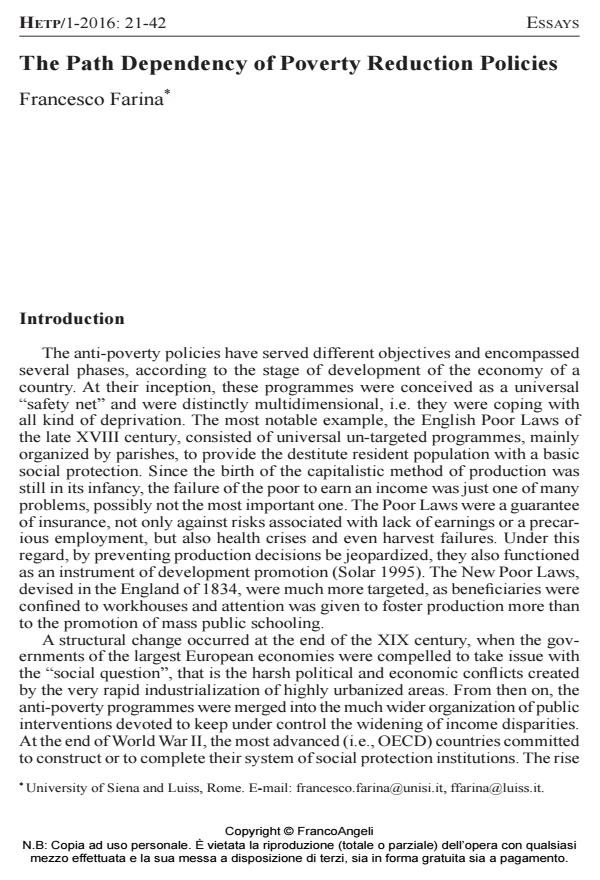The Path Dependency of Poverty Reduction Policies
Titolo Rivista HISTORY OF ECONOMIC THOUGHT AND POLICY
Autori/Curatori Francesco Farina
Anno di pubblicazione 2016 Fascicolo 2016/1
Lingua Inglese Numero pagine 22 P. 21-42 Dimensione file 196 KB
DOI 10.3280/SPE2016-001002
Il DOI è il codice a barre della proprietà intellettuale: per saperne di più
clicca qui
Qui sotto puoi vedere in anteprima la prima pagina di questo articolo.
Se questo articolo ti interessa, lo puoi acquistare (e scaricare in formato pdf) seguendo le facili indicazioni per acquistare il download credit. Acquista Download Credits per scaricare questo Articolo in formato PDF

FrancoAngeli è membro della Publishers International Linking Association, Inc (PILA)associazione indipendente e non profit per facilitare (attraverso i servizi tecnologici implementati da CrossRef.org) l’accesso degli studiosi ai contenuti digitali nelle pubblicazioni professionali e scientifiche
The evolutionary paths followed by poverty reduction policies in the advanced and in the developing countries have been quite different. The paper endorses the view whereby the higher is the initial level of income inequality in a country, the less the subsequent GDP growth is bound to "trickle down" to the poor. Due to the perverse interplay between growth, income inequality and inequality of opportunity, the tight correlation between material and non-material conditions of life often prevents low-income countries to reduce the size and the intensity of poverty. After the low-income countries’ involvement in globalization, the construction of indices of multidimensional poverty is taken as decisive by international organizations to carefully design anti-poverty aid policies by taking into account the specific characteristics of the area of intervention.
Parole chiave:Poverty, inequality, welfare state, international aid
Jel codes:I31, I38, D63,P36
Francesco Farina, The Path Dependency of Poverty Reduction Policies in "HISTORY OF ECONOMIC THOUGHT AND POLICY" 1/2016, pp 21-42, DOI: 10.3280/SPE2016-001002